Introduction
Microsoft Defender ATP is a robust platform designed to empower organizations in their fight against cyber threats. It equips them with advanced tools to detect, investigate, and respond to potential risks with efficiency and precision. Among its key features is the ability to harness the power of AI, enabling organizations to proactively stay ahead of threats.
With access to a diverse range of security data, Microsoft Defender ATP offers comprehensive coverage and ensures the security of digital assets. In this article, we will explore the key capabilities of Microsoft Defender ATP, its integration with other Microsoft solutions, and the benefits it provides in terms of enhanced security, improved incident response, simplified management, and cost savings. As organizations navigate the complex cybersecurity environment, Microsoft Defender ATP stands as a trusted and reliable ally, offering comprehensive protection that is as dynamic and resilient as the threats it aims to thwart.
Key Capabilities of Microsoft Defender ATP
The ATP platform from a certain technology company is a strong tool created to empower organizations in their battle against cyber threats. It equips them with advanced tools to detect, investigate, and respond to potential risks with efficiency and precision. Among the key features of Defender ATP is the ability to harness the power of AI, which has become a transformative force in cybersecurity. With AI, organizations can proactively stay ahead of threats by analyzing massive data streams, making the solution particularly powerful given its access to a diverse range of data protection information.
The platform's capabilities are not just theoretical but have practical applications as evidenced by the experiences of various organizations. For instance, the Savannah-Chatham County Public School System, with a mission to ignite a passion for learning, faced the typical public school challenge of limited resources. However, they discovered a solution in a protection system that efficiently operates itself, enabling them to concentrate on safeguarding the data of staff and students. Similarly, the Arab National Bank, one of the oldest banks in Saudi Arabia, embraced an ambitious digital transformation strategy that included enhancing their cybersecurity operations.
The company consistently invests in research and innovation in the field, as emphasized in the Digital Defense Report. The report, covering the period from July 2022 through June 2023, outlines the company's dedication to building cyber resilience and contributing to the global community of safeguard. This commitment is evident in the new capabilities added to Microsoft's ATP and the broader suite of protection offerings from the company, including the Threat Intelligence and Security Copilot.
These improvements are supported by a basis of threat intelligence, with the researchers and analysts from the company processing 65 trillion protection signals daily. This knowledge informs the features and capabilities within ATP, which are designed to give organizations an edge against sophisticated threat actors. The efficacy of the security solutions provided by Microsoft is derived from the various telemetry sources such as Cloud Apps, Identity, Office 365, and more.
The integration of these features ensures that the ATP solution provided by Microsoft remains a top-tier choice for organizations seeking to secure their digital assets, now and into the future. As the cybersecurity landscape evolves, ATP's capabilities will continue to advance, offering protection that is as dynamic and resilient as the threats it aims to thwart.
Threat and Vulnerability Management
Defender ATP stands at the forefront of enabling organizations to fortify their cyber defenses by providing an advanced threat and vulnerability management platform. It leverages AI-driven security insights to help identify and prioritize system vulnerabilities, empowering teams to take swift, informed action to mitigate potential security risks. Insights from the Digital Defense Report emphasize the importance of data diversity and volume in enhancing cybersecurity measures. ATP utilizes a vast telemetry network, including for Endpoint and Office 365, among others, to offer a comprehensive understanding of threat patterns and bolster cyber resilience.
Security professionals emphasize the necessity of a proactive incident response plan, validated through regular testing and simulations, to maintain effectiveness against evolving cyber threats. Microsoft ATP aligns with these best practices by integrating guided response capabilities, as delineated in the paper 'AI-Driven Guided Response for Security Operation Centers with Microsoft Copilot for Security.' This demonstrates a dedication to excellence and user data privacy, reflecting the values upheld by the protection community and collaborators like arXivLabs.
Amidst global challenges, collaboration and innovation in cybersecurity are paramount. Organizations like OODA provide expert intelligence and threat management services, underscoring the collective effort required to advance digital safety. ATP's function in this ecosystem is vital, as it not only aids in anticipating attackers' future actions but also strengthens the overall posture of organizations, thus contributing to a safer digital domain for all.
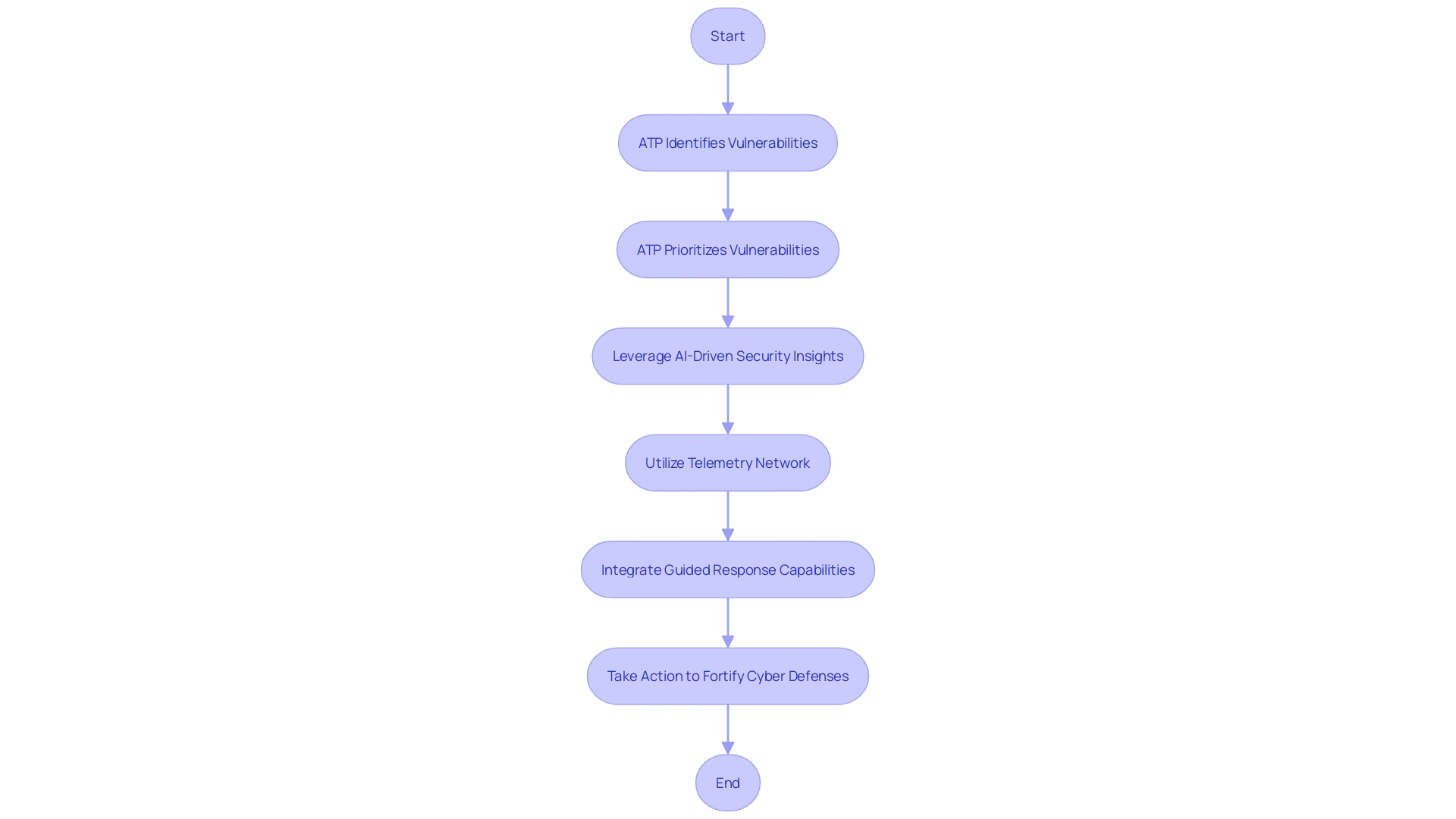
Attack Surface Reduction
Reducing the attack surface is a critical aspect of enhancing cybersecurity posture. The Advanced Threat Protection (ATP) from the software giant plays a crucial part by enforcing strong security measures like application control and exploit protection. This proactive approach is essential in an era where cyber threats are not only evolving but are found in unexpected places, such as the emergence of phishing attacks through platforms like Teams.
To address these evolving threats, organizations are advised to consider disabling non-essential external access in applications, thereby limiting the attack surface. Furthermore, the capabilities of ATP are in line with frameworks like MITER ATT&CK, providing insights into potential cyber-attack strategies and aiding in the preparedness against them.
Real-world evidence of effectiveness comes from instances where Defender ATP detected ongoing attacks through the analysis of log data, even after a web app had been compromised. This shows the significance of keeping a thorough inventory and retaining logs, as Microsoft does for its production infrastructure and services. Furthermore, keeping systems up to date is non-negotiable, as unpatched systems are frequently the entry points for attacks.
The increasing pattern of remote work and the widespread use of IoT devices add intricacy to the landscape of protection. As the traditional security perimeter erodes, identity security becomes paramount. The reminder that not all vulnerabilities will be patched, and some will persist, means that organizations must focus on identifying and mitigating the most likely exploitable vulnerabilities.
Recent volumetric DDoS attacks, as reported by BleepingComputer, underscore the need for robust defense strategies. 'The integration of ATP with threat intelligence feeds and the utilization of tools beyond manual spreadsheets—which only encompass an average of 12% of assets—are crucial in effectively combating such threats'.
In summary, while organizations navigate the intricate cybersecurity landscape, the extensive coverage, automatic threat detection, and reliance on valuable intelligence from numerous sources emphasize the crucial role of ATP in safeguarding assets and minimizing the vulnerability to attacks.
Next-Generation Protection
The landscape of cybersecurity is in a constant state of evolution, with threats becoming increasingly sophisticated. The ATP from the tech giant represents a pivotal advancement in the fight against these cyber threats, employing a combination of machine learning, behavioral analysis, and extensive cloud-based intelligence. These tools work together to offer proactive and real-time defense mechanisms that are essential for thwarting advanced attacks.
Banks like M&T, with its significant history and large customer base, face the challenge of protecting sensitive data amid the digital transformation of the banking industry. The rise of fully digital customer experiences has required the implementation of strong cybersecurity solutions like Defender ATP to fulfill the rigorous safety and regulatory requirements.
Incorporating AI into cybersecurity strategies enables organizations to not just react to threats, but to anticipate and prevent them before they materialize. This proactive stance is critical as cyber threats have morphed from simple viruses to complex, multi-faceted attacks, including Advanced Persistent Threats (APTs) and state-sponsored attacks.
The significance of network resilience has been emphasized by experts from the Network Resilience Coalition, emphasizing the necessity for enhanced protection measures to safeguard the critical infrastructure that businesses and societies rely on. This aligns with the approach of the aforementioned company as detailed in their Digital Defense Report, which underscores the company's commitment to cybersecurity through continuous innovation and collaboration.
The access to diverse security data empowers an unparalleled understanding of the cybersecurity landscape, enabling the prediction of attacker behaviors and the bolstering of cyber resilience. This level of insight is vital for institutions like M&T Bank, which must maintain the highest standards of software quality and compliance to protect their operations and reputation.
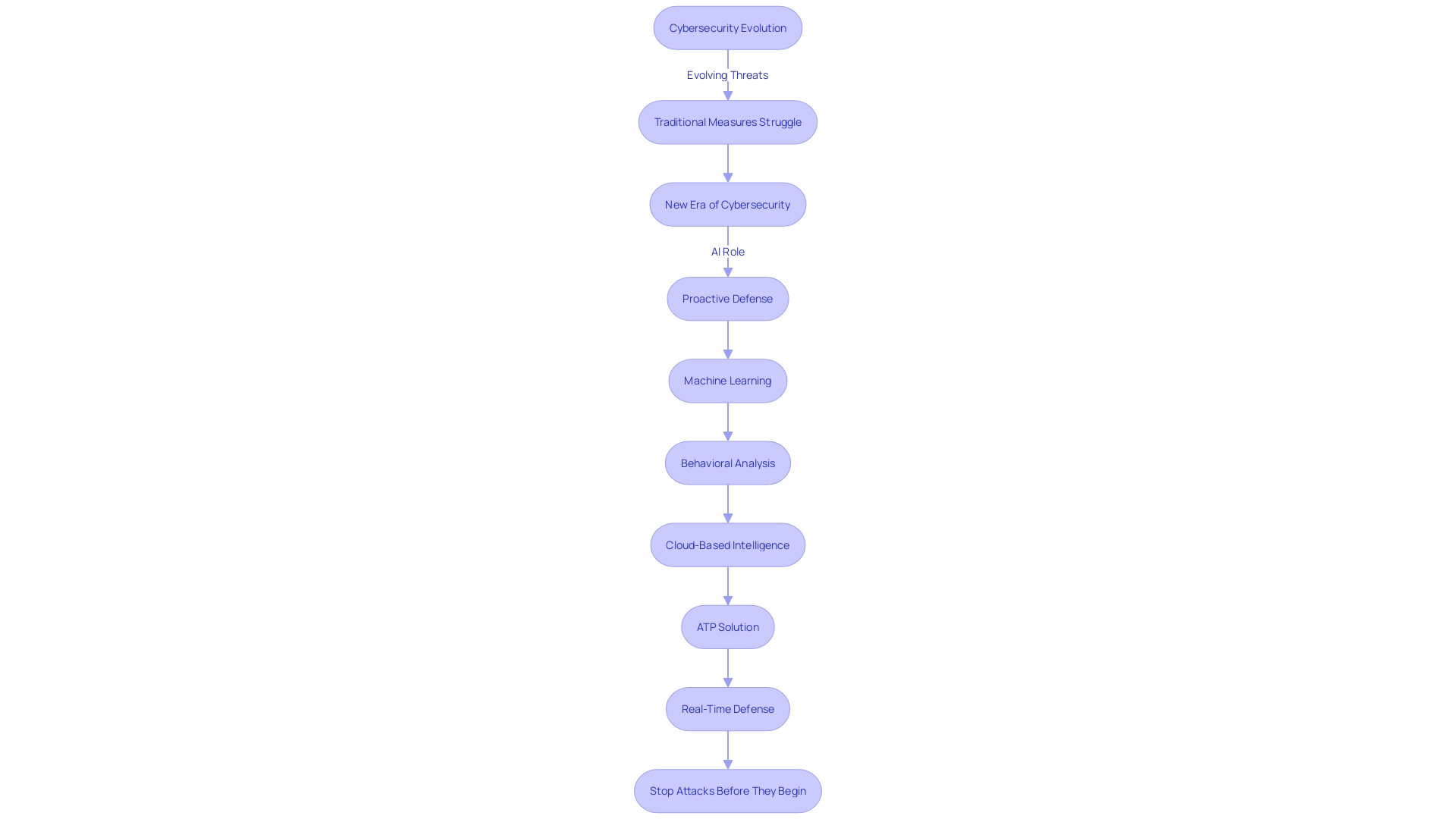
Endpoint Detection and Response
ATP stands as a strong solution in the realm of endpoint detection and response (EDR), offering organizations the means to not only detect threats on their endpoints but also to enact swift and efficient remediation. With the increasing sophistication of cyber threats, such as the alarming trend of phishing attacks via Microsoft Teams, the importance of EDR systems that can adapt to new attack vectors is paramount. ATP's robust EDR capabilities are boosted by its automatic attack disruption feature, which flags incidents with high confidence for potential automatic disruption, thus minimizing the window of opportunity for threats to cause harm.
Organizations can spot affected incidents through clear visual cues such as an 'Attack Disruption' tag, yellow banners indicating taken actions, and updated asset statuses within incident graphs. The system's high-fidelity signals, which are the result of correlating millions of Defender product signals across various domains, including email, identity, and networks, contribute to a high signal-to-noise ratio (SNR). The ongoing investigation of incidents by the security research team at the company plays a critical role in ensuring that the automatic attack disruption feature is both effective and accurate.
In the battle against cybersecurity threats, the dedication of the company is evident in the Digital Defense Report, which offers practical information and highlights the global cooperation and creativity among defenders. As technology advances, so does the cybersecurity landscape, necessitating a strong EDR like ATP from the company that provides real-time monitoring and response, along with the essential control over endpoint activities. This comprehensive approach, when coupled with the internal management capabilities required for EDR solutions, sets the stage for a formidable defense against cyber adversaries.
Automated Investigation and Remediation
ATP streamlines the cybersecurity landscape with its advanced automation capabilities. By leveraging automation for incident response, the platform expedites the investigation and neutralization of cyber threats, thereby enhancing organizational resilience against attacks. Particularly in light of evolving attack methods, such as phishing through Microsoft Teams, the need for robust and responsive security measures is more critical than ever. ATP's automation tools can rapidly respond to such threats, minimizing the window of opportunity for attackers to exploit vulnerabilities.
The integration of Azure Automation Service with ATP further underscores its potency in automating cloud-management tasks. This seamless combination allows organizations to deploy scripts effortlessly, managing resources without the burden of infrastructure maintenance. It empowers businesses to focus on strategic activities rather than the nuances of execution.
Furthermore, in the context of the growing intricacy of cyber threats, like those associated with crypto mining campaigns, ATP's automated systems are invaluable. They provide continuous monitoring and management of these threats, significantly reducing the time and risk involved in manual oversight.
With the continuous updates and technical support from the software giant, as indicated by the forthcoming changes in the security solution for Cloud, organizations can stay ahead of the curve. Utilizing features like the Unified Audit Log and Security Copilot's promptbooks further strengthens the security posture by enabling detailed analysis of security incidents and streamlining the execution of security-related tasks.
The necessity for a dynamic defense mechanism becomes even more apparent when considering the findings of a study analyzing 14 million attack simulations, which revealed that organizations typically prevent only 60% of attacks. This statistic highlights the significance of embracing an integrated approach, combining prevention with detection capabilities—a strategy that the ATP solution from the technology company is designed to support.
Overall, ATP's automation and cloud integration capabilities, along with continuous improvements, provide organizations with a strong defense against the various types of modern cybersecurity threats. It represents a strategic investment in technology that not only protects but also adapts to the evolving digital landscape.
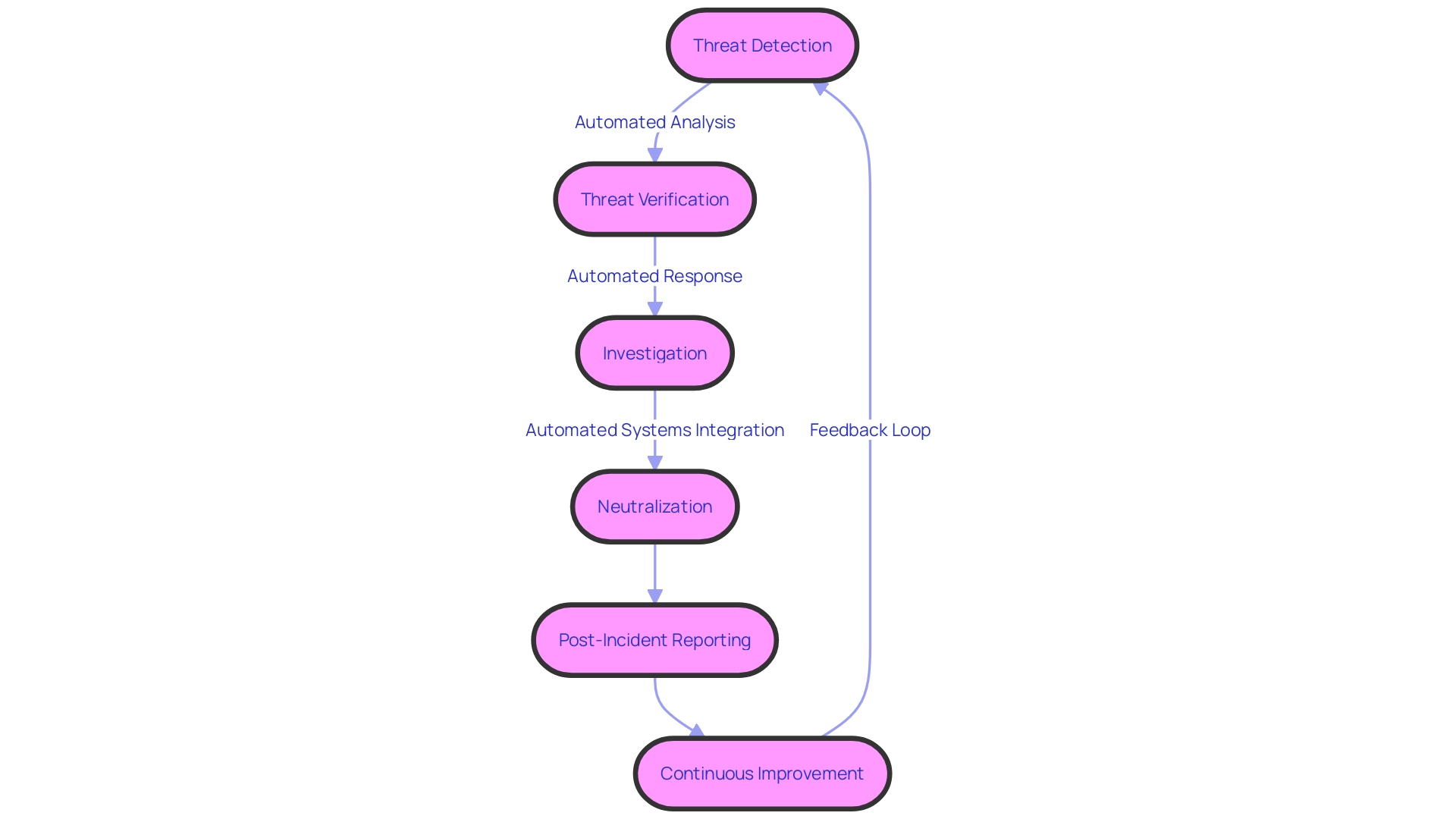
Secure Score and Device Management
Microsoft ATP stands at the forefront of organizational cybersecurity, providing a Secure Score feature that delivers a panoramic assessment of an organization's protection stature. This measure is vital for organizations to assess their robustness, offering practical insights and guidelines to strengthen their defenses. Moreover, with the escalating complexity of cyber threats, coupled with the necessity to comply with an ever-increasing number of regulatory updates—amounting to 250 per day—Microsoft ATP's device management capacities become indispensable. Financial institutions like M&T Bank, amid a sweeping digital transformation, rely on such tools to maintain stringent protection and compliance standards, ensuring the integrity of sensitive data.
In an era where cyberattacks are not just more frequent but also more sophisticated, the banking sector is under immense pressure to protect customer data, as underscored by the digital evolution of Arab National Bank. With Defender ATP, organizations can embrace a cohesive end-to-end protection approach that Security advocates through its vast range of over 50 categories across six product families. This approach is in line with the Security Future Initiative, which aims to provide comprehensive protection across the entire digital landscape. As highlighted in the Digital Defense Report by a leading technology company, utilizing AI to maintain an advantage in cybersecurity necessitates extensive data analysis, a capability that the company's varied data sources support. ATP's Secure Score is thus not only a measure but a strategic tool enabling organizations to navigate the cybersecurity labyrinth with confidence.
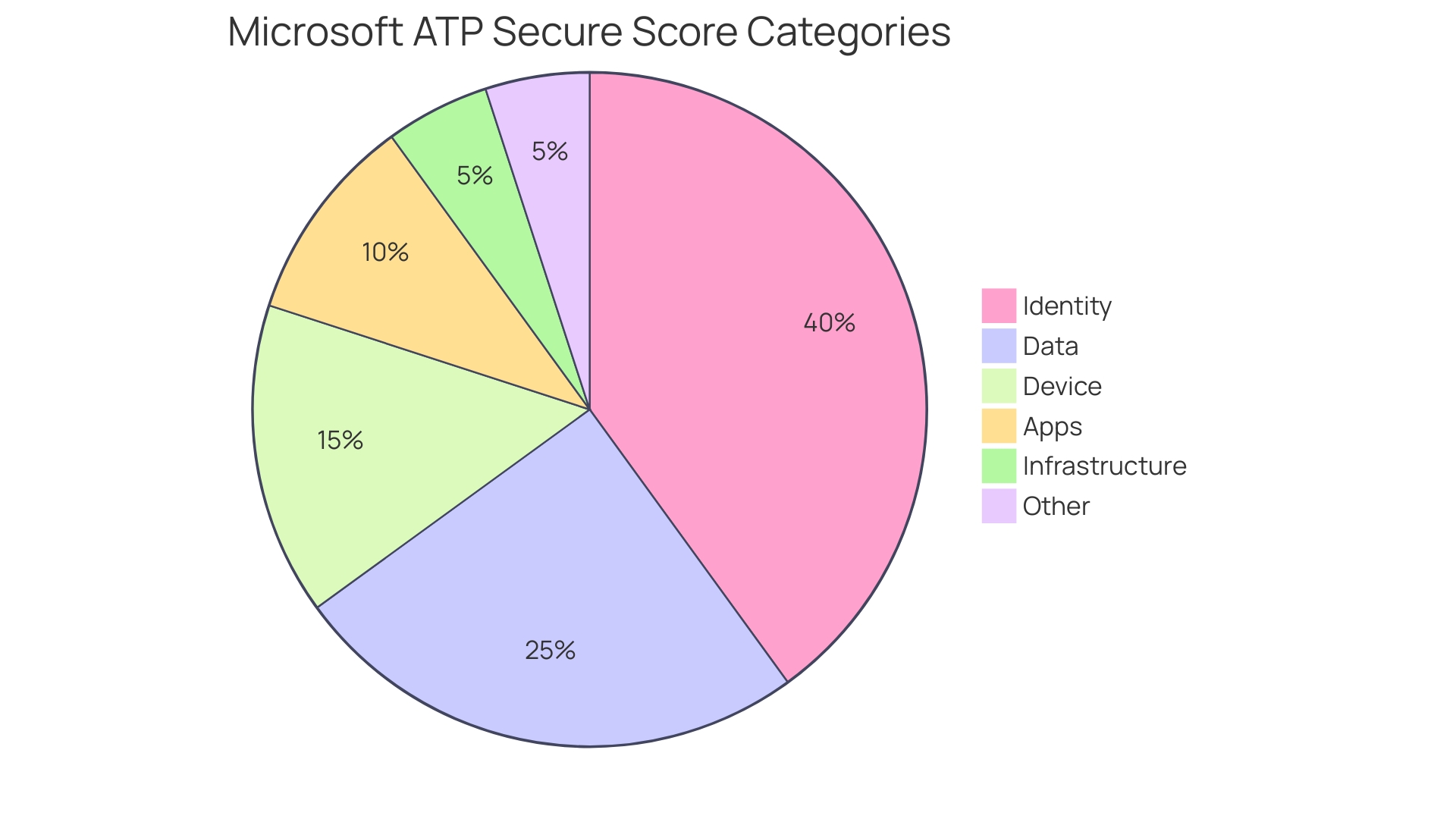
Integration with Microsoft Solutions
The ATP from the company stands as a guiding light of cyber resilience, embodying a comprehensive integrated solution that simplifies management while bolstering efficacy. It transcends mere pace to ensure the digital environment is robust, adaptable, and impenetrable to the constantly evolving threats. The collaboration between ATP for protection against cyber threats and other offerings such as Azure Active Directory and Cloud App Security epitomizes the essential comprehensive approach to cybersecurity.
This union is pivotal in cultivating a seamless operational experience, as it amalgamates various protection tools into a single, cohesive platform. Such integration reduces complexity and paves the way for streamlined operations, reinforcing the health and equilibrium of the entire digital ecosystem. It is this integration that enables organizations to maintain a balanced and healthy digital infrastructure, which is essential in the face of the intricate landscape of modern cybersecurity.
By consolidating diverse protection elements into a unified system, Defender ATP from Microsoft provides unparalleled visibility into the safety landscape, which is crucial for enhanced detection, swift response, and proactive prevention of threats. The approach of the platform is evidence of the dedication of Microsoft, as highlighted in the Microsoft Digital Defense Report, to research and innovation in safeguarding information. With access to extensive and varied security data, the company is uniquely positioned to comprehend the state of cybersecurity and identify predictors for potential future attacks.
To sum up, ATP's integration with other solutions from the same company is not only a characteristic but a strategic step towards a more resilient and secure digital infrastructure, one that guarantees the balance and health of an organization's entire digital ecosystem.
Cross-Platform Coverage and Device Support
The ATP provided by the tech giant serves as a beacon of cybersecurity, offering protection for a wide range of operating systems, such as the popular Windows, the elegant MacOS, the strong Linux, and the powerful mobile platforms Android and iOS. This multi-platform defense is crucial for institutions like M&T Bank, which has steered through the digital transformation waters for over a century and a half, and today faces the herculean task of protecting sensitive data amidst a sea of regulatory changes and sophisticated cyber threats. Likewise, the Arab National Bank's effort to update its financial services reflects the need for a solution that goes beyond conventional limits, in line with the vision of empowering every organization globally.
In the face of the evolving cybersecurity landscape, where the speed and complexity of attacks continue to rise, Defender ATP represents a unified front. Organizations are expressing a clear preference for an integrated, end-to-end protection approach, as fragmented solutions prove inadequate against the backdrop of daily regulatory updates and a widening cybersecurity workforce gap. The coherent strategy of the company, based on the Zero Trust model, is in line with the Security Future Initiative, offering the complete protection required before and after a breach.
The banking giant ING's consolidation of its protection tools into a singular, end-to-end approach is a testament to the effectiveness of such strategies, underlining the benefits of streamlined safety for their vast cloud environments. As industry leaders reassess their protective structures, the need for 'safe by design' products increases, and the ATP from Microsoft stands ready to answer this demand, empowering organizations to navigate the cyber landscape with assurance and accuracy.
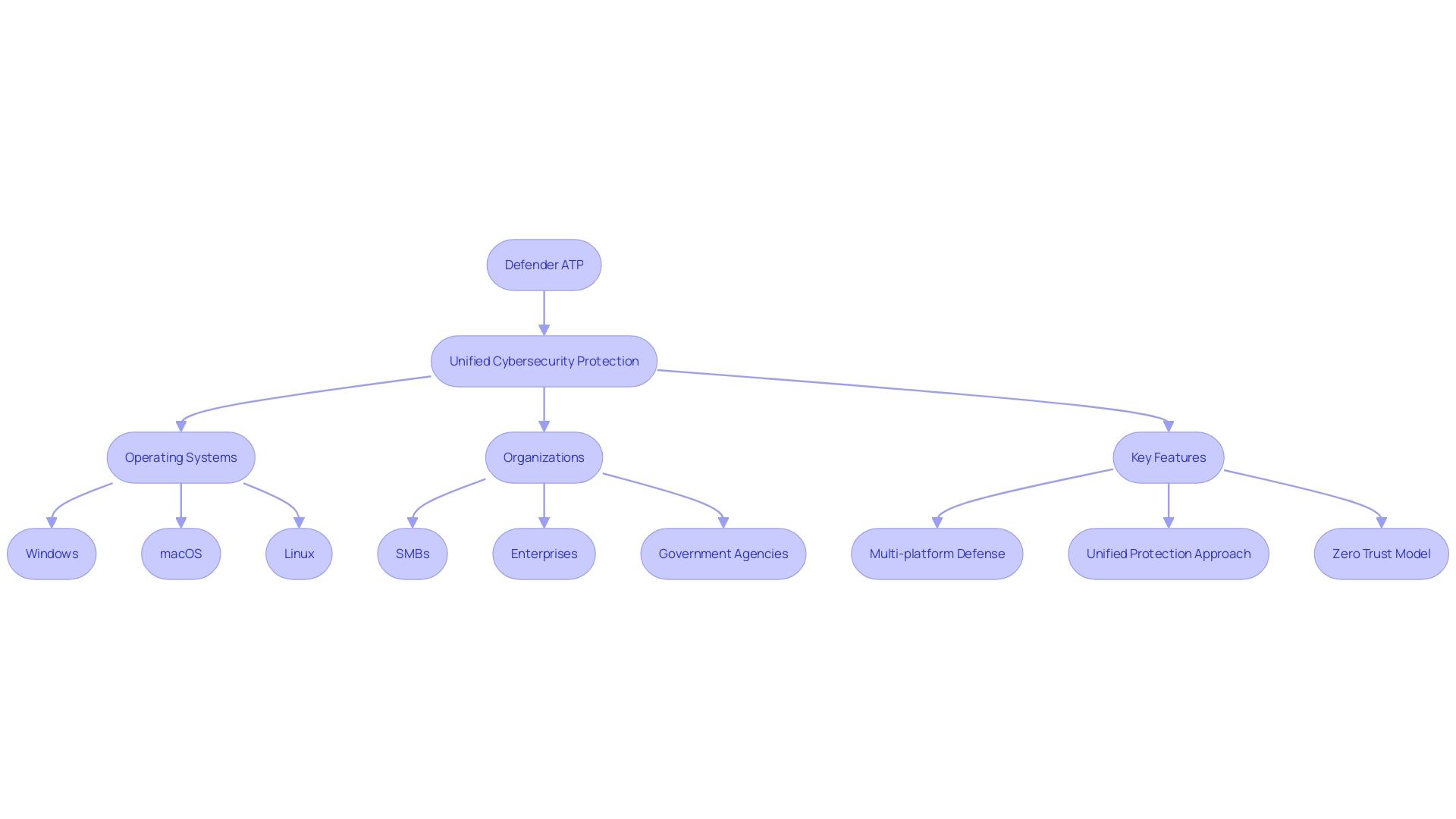
Advanced Threat Protection Features
ATP by Microsoft serves as a powerful barrier in the cybersecurity landscape, providing a suite of advanced threat protection capabilities. Network protection intercepts and analyzes traffic to and from your organization, acting as a watchful guardian against unwelcome intrusions. Web protection offers a shield against online threats, providing safe browsing experiences. Email protection, on the other hand, scrutinizes incoming and outgoing communications to thwart phishing attacks and block malicious content, ensuring that the integrity of your organization's communication channels is uncompromised.
Consider the case of M&T Bank, a stalwart in the banking industry, which has embraced digital transformation while upholding stringent measures to safeguard sensitive data. Similarly, the Savannah-Chatham County Public School System demonstrates the critical nature of robust cybersecurity protections in educational institutions, where protecting student and staff data is paramount.
In response to the escalating cyber threat landscape, the company has integrated threat intelligence into its ATP system, harnessing 65 trillion safety signals daily from its vast network. This intelligence is crucial for identifying sophisticated threat actors and protecting against their tactics. The recent addition of Microsoft's Threat Intelligence and its API for Security Copilot clients at no extra expense exemplifies the commitment of the company to empowering organizations with comprehensive protective measures.
Moreover, the cybersecurity realm is not just battling the pace of attacks but also regulatory complexities, with 250 new updates every day that must be navigated. Organizations like ING have acknowledged the value of an end-to-end approach, consolidating disparate tools into a singular, more effective framework.
The principles of secure-by-design from the technology company are central to the architecture of ATP, guaranteeing that safety is not an afterthought but a fundamental element. This philosophy is reflected in the white paper encouraging software manufacturers to assume responsibility for safety outcomes, embrace transparency, and promote an organizational structure that prioritizes protection. The ATP by a well-known tech company exemplifies this approach, offering a proactive, comprehensive defense strategy that aligns with the Zero Trust model, ensuring that every aspect of an organization's digital estate is fortified against cyber threats.
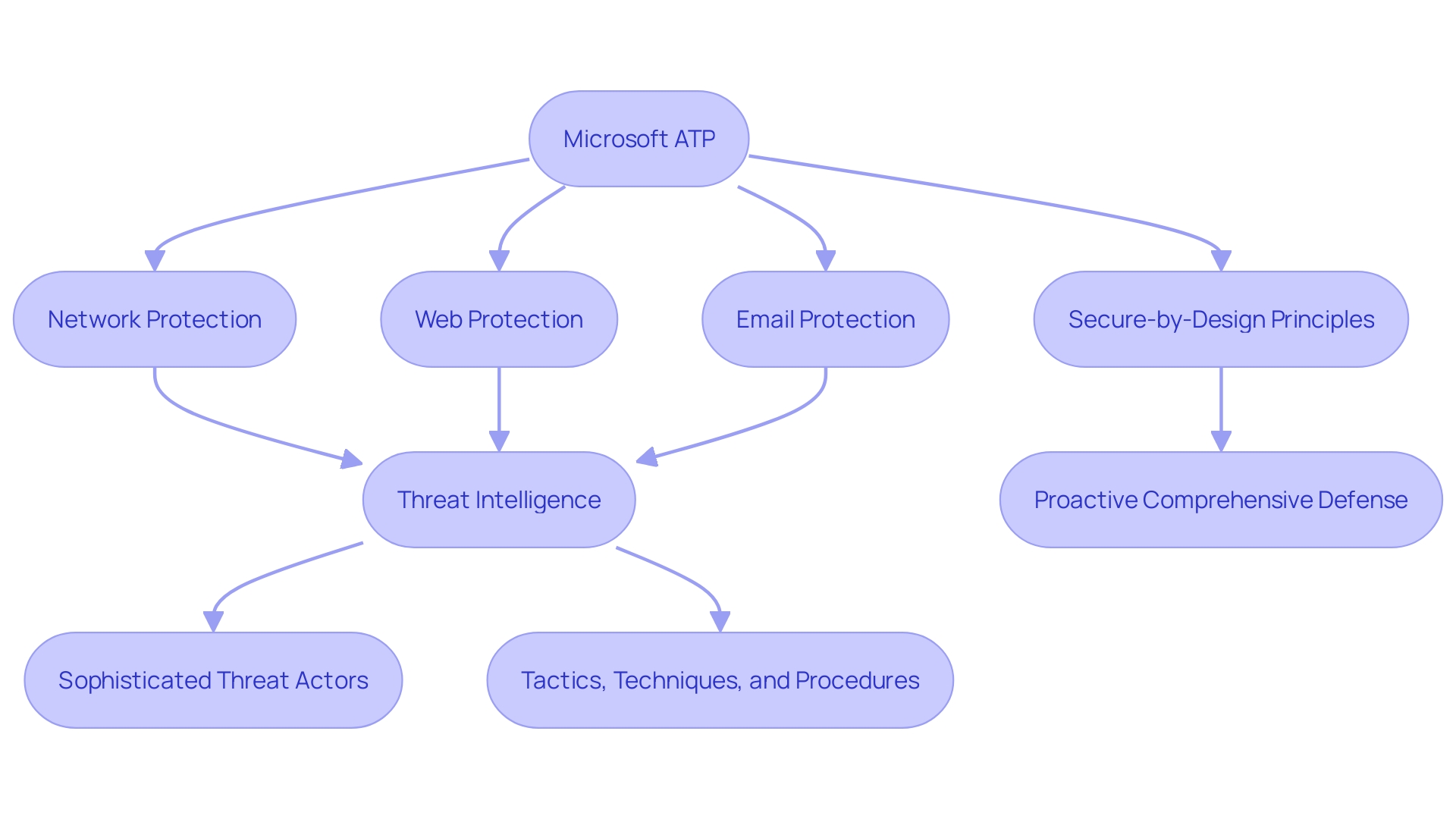
Benefits of Using Microsoft Defender ATP
The Advanced Threat Protection (ATP) by the tech giant serves as a strong platform designed to assist organizations like M&T Bank and the Savannah-Chatham County Public School System (SCCPSS) in fulfilling strict protection requirements and safeguarding sensitive data. By leveraging a combination of advanced AI, extensive data on protection, and telemetry from multiple sources—including Defender for Endpoint, Cloud Apps, Identity, Office 365, and Entra ID—Defender ATP provides real-time threat detection and response, ensuring that potential breaches are swiftly identified and mitigated.
The platform's strengths lie in its ability to disrupt sophisticated cyber-attacks, classified by Lockheed Martin’s Cybersecurity Kill Chain into seven phases, each with unique Indicators of Compromise (IOCs). The investment in security research and community collaboration is evident in the actionable insights provided by the annual Digital Defense Report, which underscores the company's commitment to global cybersecurity.
Recent news highlights the initiative of a tech giant to build a 'cyber shield' for Australia, reflecting their ongoing efforts to defend against nation-state cyber threats worldwide. This multi-billion dollar investment underscores the pivotal role of the company's cyber defense capabilities in safeguarding the digital economy. Organizations leveraging Microsoft Defender ATP can expect a protective measure that is not only self-sufficient but also equipped to counter complex threats, as emphasized by security professionals like Carl Eller of SCCPSS. The platform's automated incident response features, such as attack disruption notifications and asset status updates, enhance its user-friendliness and efficiency.
In conclusion, the ATP of a certain company is a proof of the considerable contributions made by this company to cybersecurity, powered by AI and supported by a vast amount of security information, enabling organizations to uphold stringent security measures and cultivate a robust digital framework.
Enhanced Security
ATP is not just a tool; it's an advanced safety ecosystem that helps organizations proactively counteract cyber threats. By leveraging AI-driven guided response, this powerful platform delivers a comprehensive, layered defense mechanism. It utilizes the extensive quantities of varied security data from various telemetry sources like Protector for Endpoint, Protector for Cloud Apps, and Protector for Identity, among others. This data is pivotal in understanding the state of cybersecurity and anticipating attacker behavior.
Future improvements to the Cloud security solution highlight the company's dedication to innovation in cybersecurity. Planned modifications aim to refine secure score metrics and streamline workflows, demonstrating an ongoing investment in strengthening cyber resilience. In addition, the enhancement of privacy protection features in the software from the technology company for individuals, such as automatic identification of unsecured WI-Fi, support for virtual private networks, and compatibility with multiple platforms, demonstrates the company's commitment to safeguarding user data privacy and ensuring a more secure online experience.
As emphasized in the Digital Defense Report by a leading technology company, the combination of research in protection and AI is establishing new standards for anticipatory defense capabilities. This report, covering insights from July 2022 through June 2023, emphasizes the importance of actionable intelligence in cybersecurity. It reinforces the significance of not only having a comprehensive incident response plan but also regularly testing and refining it through simulated exercises and tabletop drills. Such preparedness is essential for maintaining an effective, transparent, and coordinated response to cyber incidents.
To sum up, the ATP from the tech giant illustrates a security resolution that adapts to the threat environment, offering entities the necessary tools and knowledge to outpace assailants and protect their digital resources.
Improved Incident Response
The Defender ATP system utilizes artificial intelligence to provide advanced automated investigation and remediation capabilities. These features are especially crucial in dealing with the constantly changing cyber threat landscape, which includes advanced phishing campaigns that have expanded beyond email to platforms such as Teams. Security incidents can be swiftly identified and addressed, substantially reducing the potential damage from breaches.
The tool employs AI to process signals and react to threats quickly, which is crucial considering the range of attack vectors and the rapidity with which they can evolve. The introduction of Copilot for Security is a significant development in this context, enabling security analysts to handle threats with machine-like efficiency.
Furthermore, the extensive array of operations logged in the 365 suite, over 3,000, can be formidable. The ATP solution from the technology company aids in simplifying this complexity by providing a framework for triaging and analyzing data, allowing for effective piecing together of an attack chain. This systematic approach to data mining is key to rapid and accurate incident response.
In terms of practical application, the Unified Audit Log within 365 captures all actions, which can be filtered for specific investigations. This information, combined with the capabilities of ATP, provides a strong defense mechanism against cyber threats. Moreover, the Copilot Early Access Program has introduced prebuilt promptbooks for specific safety tasks, enhancing the efficiency of threat response workflows.
As the cybersecurity landscape becomes more intricate with new threats emerging, such as phishing via Teams, ATP's streamlined integration and automation capabilities play a vital role. By enabling organizations to respond to threats promptly and effectively, they can better manage their technology investments and maintain a strong posture, which is crucial for any strategic technology initiative.
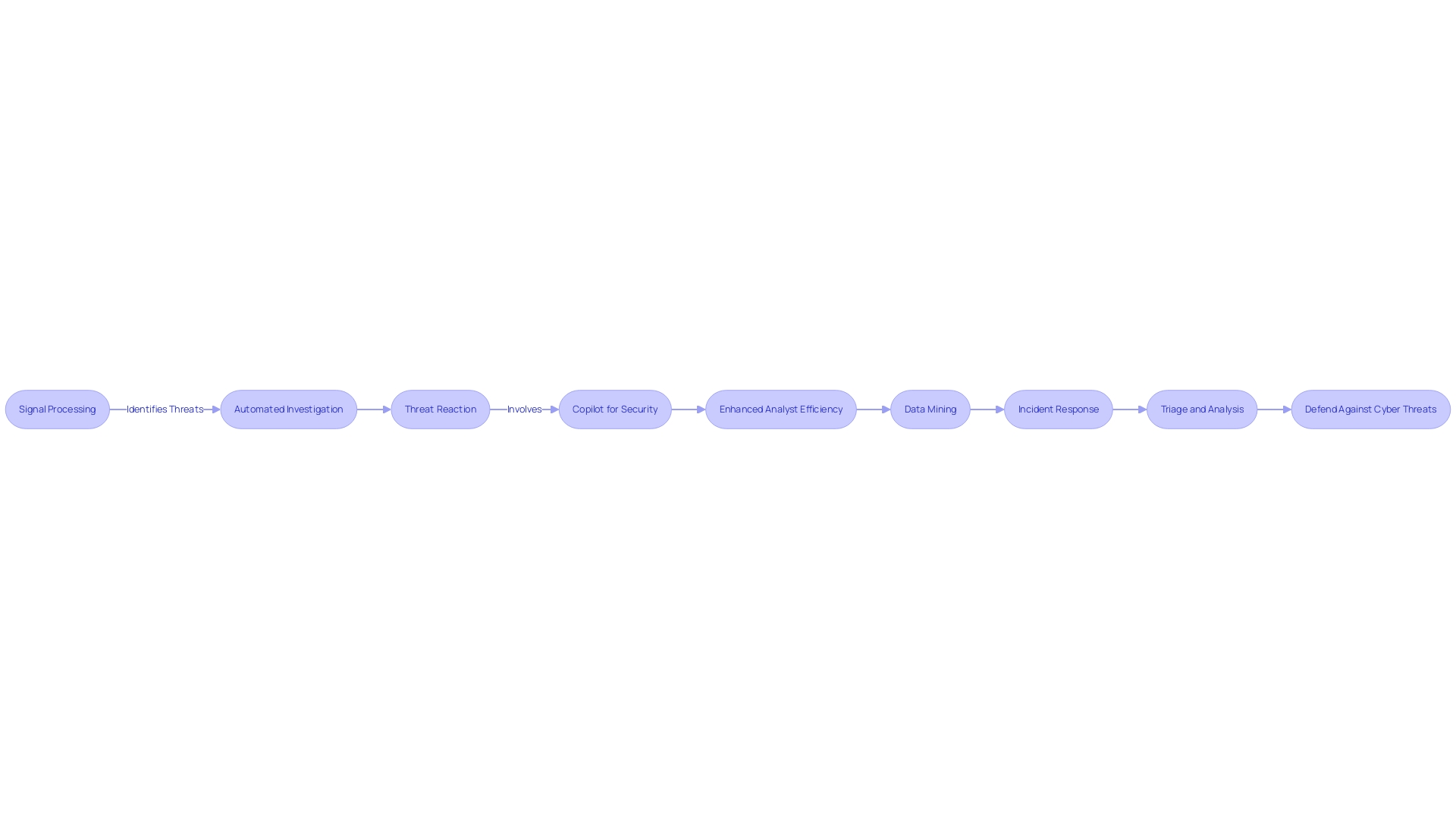
Simplified Management
Microsoft Defender Advanced Threat Protection (ATP) delivers an integrated, comprehensive defense against the latest cyber threats by providing a singular management console. This console brings together management of safety across the organization, making it easier to enforce policies, configure settings, and manage alerts. Such a integrated approach ensures a strong posture, essential for industries like banking, where strict regulatory standards and high-value transactions necessitate exceptional measures. For example, M& T Bank, with its rich legacy in community banking, has embraced this digital shift toward advanced cybersecurity solutions to safeguard sensitive data amidst the industry's digital transformation.
As industries progress technologically, the requirement for comprehensive protection approaches becomes paramount. Microsoft Defender ATP exemplifies this strategy, aiming to secure digital estates both before and after potential breaches, aligning with initiatives like the Security Future Initiative. By implementing such a proactive and comprehensive safety measure, organizations, ranging from financial institutions like ING to educational systems like SCCPSS, can mitigate risks while enhancing operational efficiency. The benefit of having a platform that 'truly runs itself' offers organizations the ability to protect their data and clientele without the overhead of extensive manual oversight, an essential factor given the current cybersecurity workforce gap estimated at 4.7 million professionals needed globally. Moreover, ATP's capacity to seamlessly integrate with over 50 categories related to protection demonstrates its versatility and alignment with an organization's broader strategy for safeguarding.
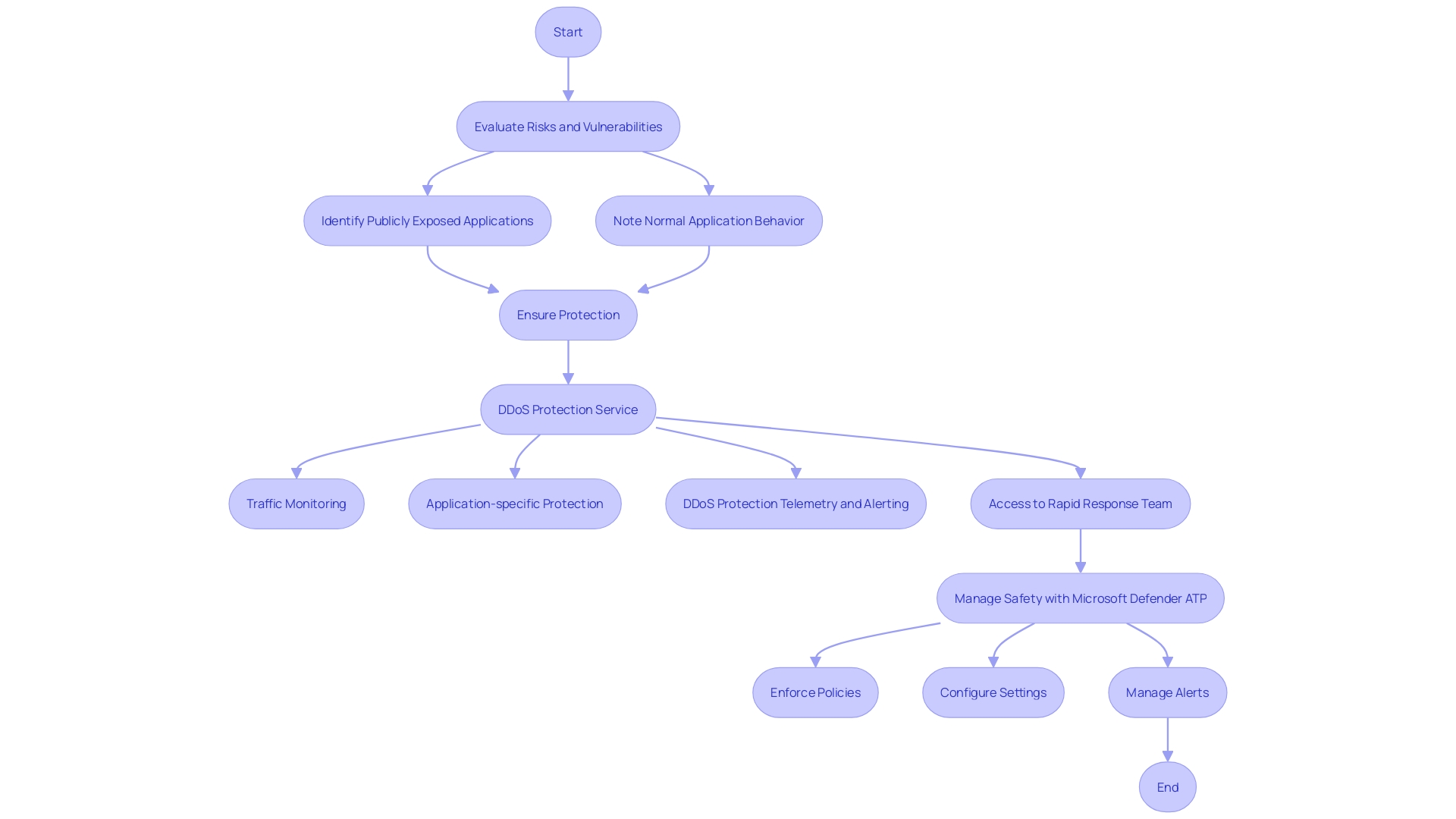
Cost Savings
Defender ATP stands as a unified platform that not only enhances protection but also offers significant cost savings by eliminating the need for multiple disparate solutions. This integration streamlines the management of protection and minimizes costs linked to deploying and maintaining different protection systems. A remarkable case is that of educational institutions, which have seen tangible financial benefits after adopting 365 Education A5. For instance, a composite higher education organization reported a 15% reduction in significant breaches and a 29% decrease in the costs to remediate any incidents. These improvements, including averted fines and compliance costs, amounted to a substantial $1.2 million over three years. Likewise, a K-12 school system achieved a 25% reduction in license costs, amounting to approximately $972,800 in savings over the same period. Such statistics underscore the value proposition of Microsoft Defender ATP, offering enhanced security alongside economic efficiency.
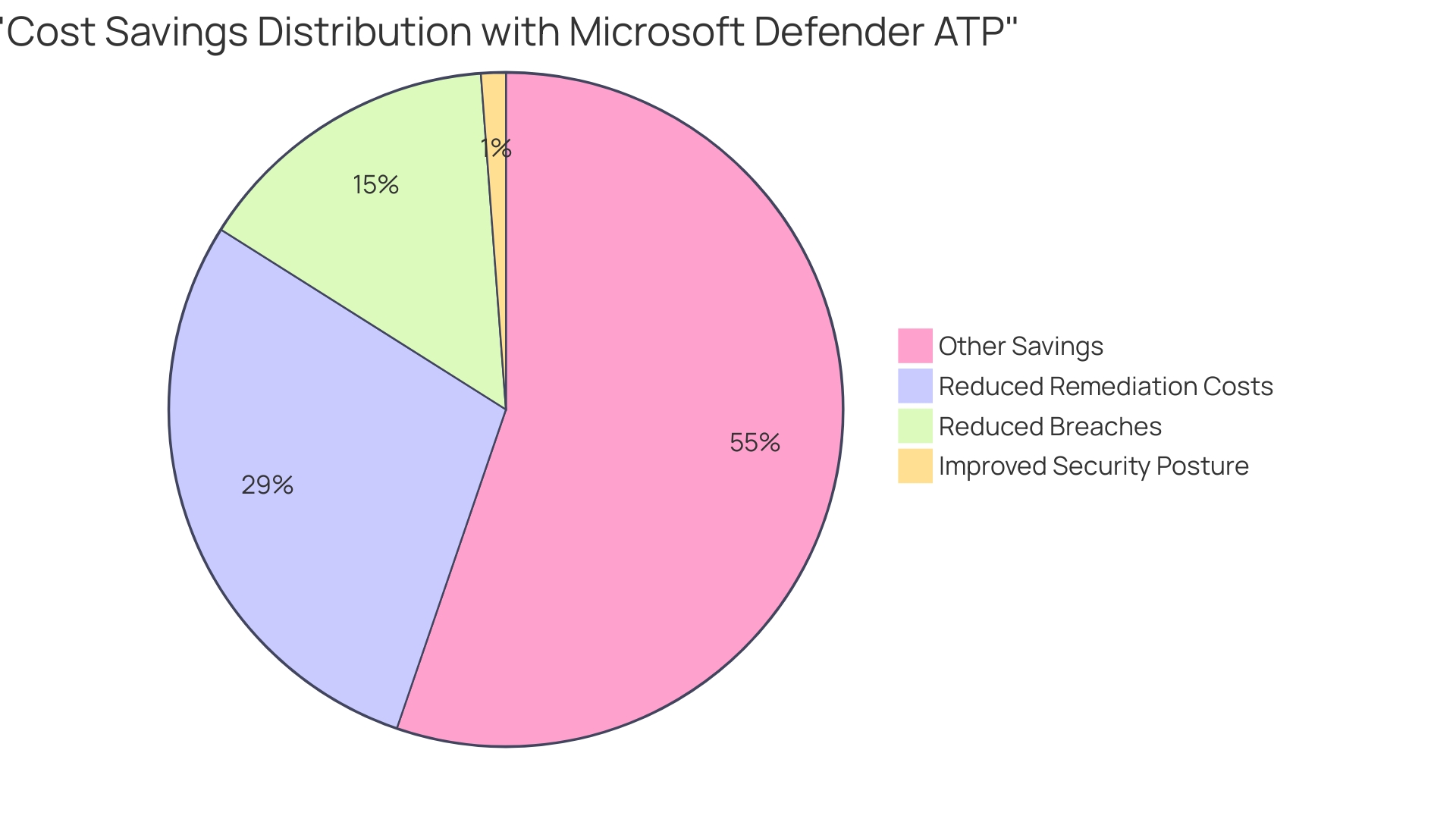
Conclusion
In conclusion, Microsoft Defender ATP is a robust platform that empowers organizations in their fight against cyber threats. By harnessing the power of AI and leveraging diverse security data, it provides comprehensive coverage and ensures the security of digital assets.
The integration of Microsoft Defender ATP with other Microsoft solutions simplifies security management and enhances detection, response, and prevention of threats. Its capabilities in threat and vulnerability management, attack surface reduction, endpoint detection and response, automated investigation and remediation, secure score and device management, cross-platform coverage, and advanced threat protection make it a trusted ally in enhancing security, improving incident response, simplifying management, and achieving cost savings.
With Microsoft's dedication to security research and innovation, organizations can trust in the continuous updates and technical support that Microsoft provides. By leveraging AI, behavioral analysis, and extensive cloud-based intelligence, Microsoft Defender ATP offers proactive and real-time protection, enabling organizations to anticipate and prevent threats before they materialize.
In conclusion, Microsoft Defender ATP is a comprehensive and reliable security platform that empowers organizations to navigate the complex cybersecurity environment. It offers enhanced security, improved incident response, simplified management, and cost savings. By leveraging AI, integrating with other Microsoft solutions, and staying ahead of evolving threats, Microsoft Defender ATP ensures that organizations can protect their digital assets with confidence and precision.




